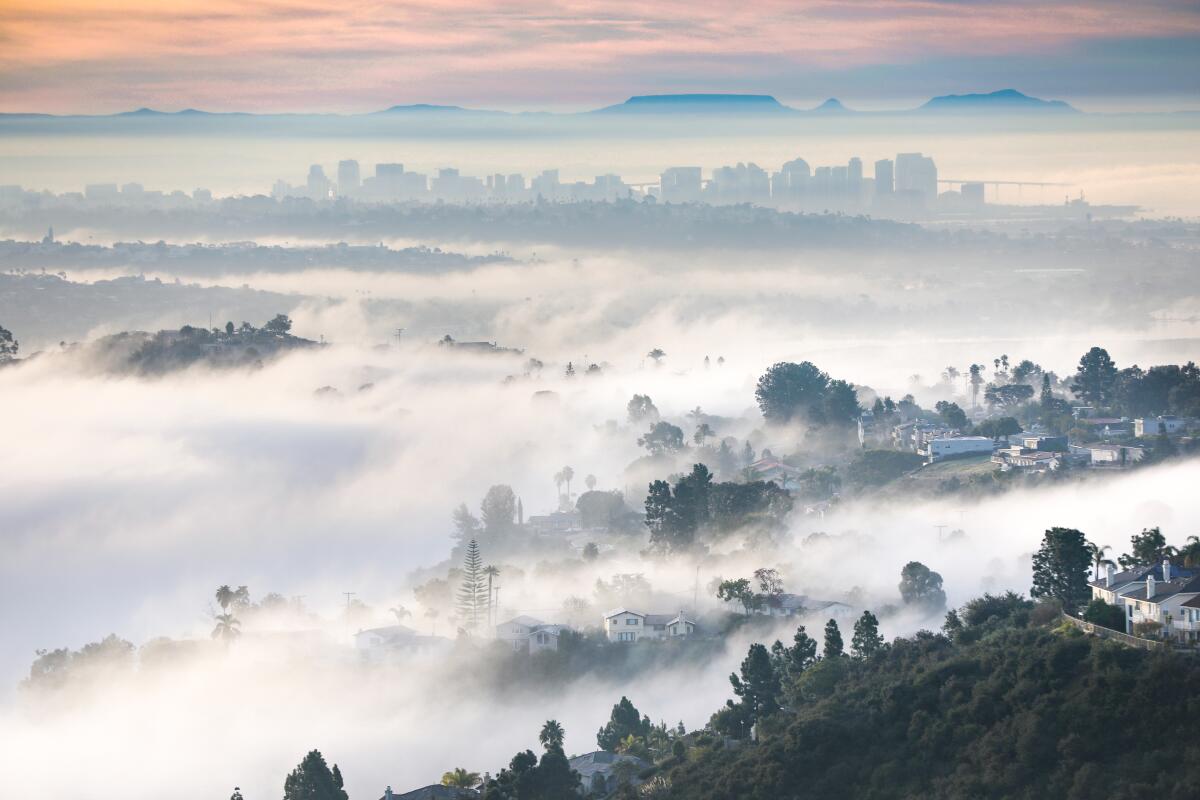Did you hear that? Another mystery boom leaves San Diego grasping for answers

- Share via
SAN DIEGO — Everybody loves a mystery. But we like them solved too, and so far an answer has been elusive for the Big Border Boom.
It rattled windows and shook doors across a large swath of San Diego and Tijuana late Wednesday afternoon, jangling the nerves of residents who’d experienced a similar noisemaker last month, and one a year earlier.
What was that?
The region joined a list of communities from coast to coast that are defined in part by unexplained goings-on. “Mysterious Shaking Rattles San Diego County AGAIN,” the website Strange Sounds trumpeted in a headline this week.
It isn’t always aural. Thirty years ago, thousands of San Diegans were drawn to what some believed was the apparition of a slain girl on a blank billboard in Chula Vista. But unexplained loud, shaking noises are the most common, sometimes falling under the general term “skyquakes.”
On the East Coast, enigmatic booms are known as “Seneca Guns,” the name drawn from a lake in upstate New York that was the setting for an 1850 short story, “The Lake Gun,” by James Fenimore Cooper.
“It is a sound resembling the explosion of a heavy piece of artillery that can be accounted for by none of the known laws of nature,” he wrote. “The report is deep, hollow, distant and imposing. The lake seems to be speaking to the surrounding hills, which send back the echoes of its voice in accurate reply. No satisfactory theory has ever been broached to explain these noises.”
After Wednesday’s boom here, the first thought of many people — this being California — was “earthquake.” But the United States Geological Survey said no. Its seismic activity sensors recorded nothing.
This being San Diego, longtime home to military jets, a lot of folks thought “sonic boom” too. “That wasn’t one of ours,” said Cmdr. Zachary Harrell, a Navy spokesman, who noted that planes breaking the sound barrier are required to do it far off the coast.
The Marines? They didn’t respond to a request for comment. Defense contractors testing some kind of newfangled weapon? Mum was the word there too, as it usually is with classified military projects.
In 2012, when a similar boom rattled windows and doors along the coastline, initial “not us” denials from the military gave way to an admission: The pilots in two Navy F/A-18 aircraft had been showing off for guests aboard the carrier Carl Vinson during a family cruise.
“Those two aircraft went supersonic about 35 miles from the coast,” a Navy spokesman said at the time. “Usually you don’t hear the side booms travel that far. It was kind of surprising to us.”
This time around, Humberto Mendoza Garcilazo, a researcher at the Center of Scientific Research and Higher Education in Ensenada, said supersonic airplanes may have been responsible for the “rumble.” But he also suggested it could have come from the day’s stormy weather and drastic changes in temperature and atmospheric pressure.
Brandt Maxwell, a meteorologist with the National Weather Service in San Diego, was skeptical about ties to the weather. He said there weren’t thunderstorms in the area at the time of the boom, about 5 p.m., and “even with a strong cold front, you won’t get that kind of rumbling.”
So, for now, a mystery.
More to Read
Sign up for Essential California
The most important California stories and recommendations in your inbox every morning.
You may occasionally receive promotional content from the Los Angeles Times.














